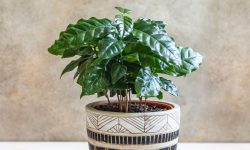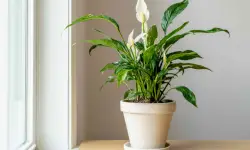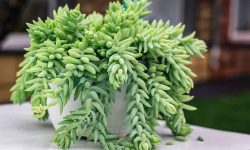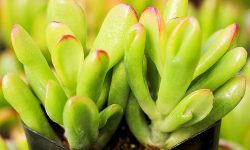For homes abundant with sunlight, selecting plants that thrive in full sun is crucial. Numerous houseplants, particularly those originating from South Africa, South America, and Australia, necessitate ample sunshine for their well-being indoors. Our recommended sun-loving plants require direct daily exposure to sunlight for optimal growth and flowering. Notably, these indoor plants are easy to maintain. The 35 types of indoor plants that receive direct sunlight below are ideal choices for your sunny home.
Different types of indoor plants for direct sunlight
Hibiscus (Hibiscus rosa-sinensis)
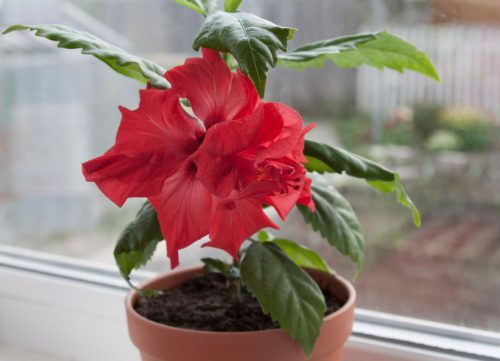
Hibiscus (Hibiscus rosa-sinensis) boasts the largest indoor flowers. Adequate light is crucial for blooms. Prune monthly for a compact form, and nourish with potassium-rich fertilizer. Maintain consistent moisture, avoiding waterlogging. Optimal conditions include bright light, well-drained watering, and a vibrant color palette of red, pink, orange, yellow, and white.
Areca Palm (Dypsis lutescens)
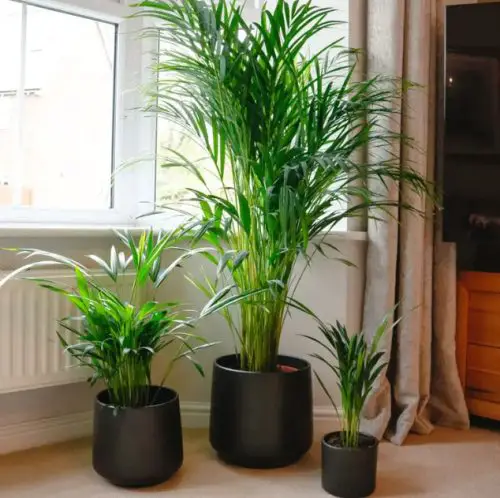
The majestic Areca Palm (Dypsis lutescens) flourishes in spacious entryways and rooms with high ceilings. Indoor growth reaches 6-8 feet with a substantial spread. They thrive in well-lit areas and require consistent moisture. Ensure proper drainage to prevent water stagnation. Ideal conditions involve abundant sunlight and high humidity for optimal growth.
Jasmine (Trachelospermum jasminoides)
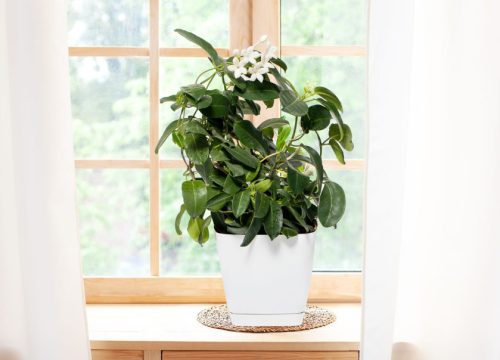
Jasmine (Trachelospermum jasminoides) is prized for its fragrant late winter blossoms. Abundant white flowers enhance any floral arrangement, with certain types also showcasing pink blooms. Optimal growth requires bright, indirect sunlight and humid surroundings. Regular watering and misting sustain moisture levels. Outdoor exposure during summer boosts resilience and overall vitality. Color options include white and pink varieties.
String of Pearls (Senecio rowleyanus)
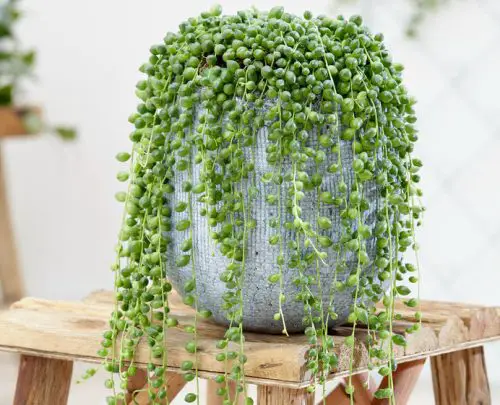
String of Pearls (Senecio rowleyanus) cascades gracefully from containers, sparking engaging conversations. Thriving in bright indirect light and sandy soil, it requires infrequent watering. With easy-to-root cuttings, sharing this whimsical succulent with friends is effortless. Optimal conditions involve occasional watering and exposure to bright, indirect sunlight.
Basil (Ocimum basilicum)
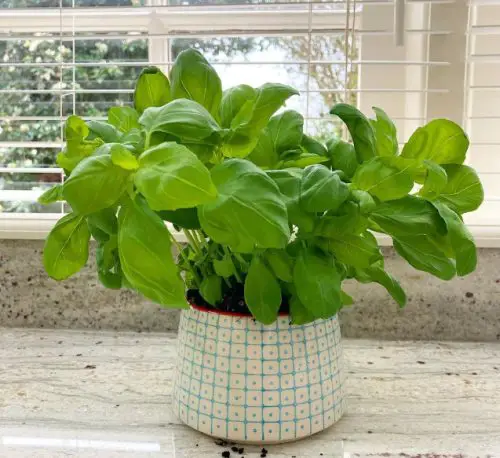
Basil (Ocimum basilicum) thrives indoors as a warm-weather herb, perfect for a sunny kitchen windowsill. Prune consistently to prevent blooming, ensuring a continuous supply of flavorful leaves for cooking. Optimal growth necessitates full sun exposure and deep, regular watering, with well-drained soil to avoid waterlogging. Preventing flowering prevents the plant from becoming woody and sparse.
Ponytail Palm (Beaucarnea recurvata)
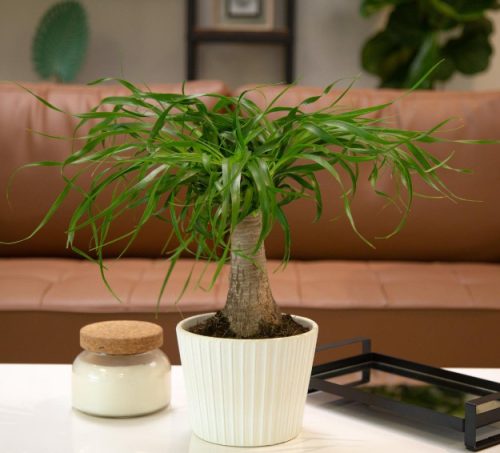
The quirky Ponytail Palm (Beaucarnea recurvata) is an entertaining addition to sunny kitchens or family rooms, flaunting a swollen trunk and frizzy foliage. Treat it like a succulent, employing coarse, sandy soil and weekly watering. This slow-growing plant requires repotting only once every year or two. Optimal conditions involve full to partial sunlight and allowing the soil to dry between waterings, utilizing the bulb-like base’s water storage.
Croton (Codiaeum variegatum var. pictum)
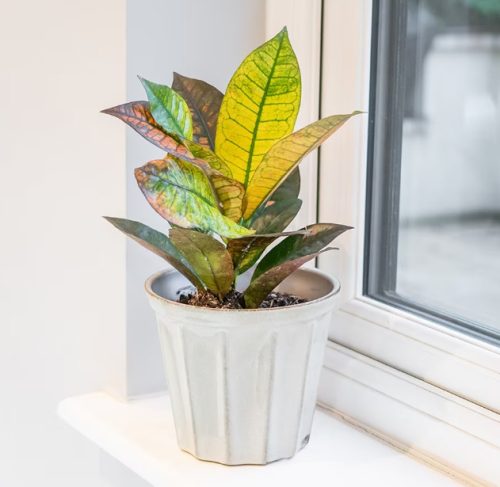
Croton (Codiaeum variegatum var. pictum) showcases stunning, vibrant foliage, rivaling flowering plants. Thriving in warmth, it risks dieback in insufficient sunlight and temperatures below 50 degrees Fahrenheit. Ideal conditions involve full sun exposure and regular watering to maintain moisture, with a preference for high humidity.
Papyrus (Cyperus papyrus)
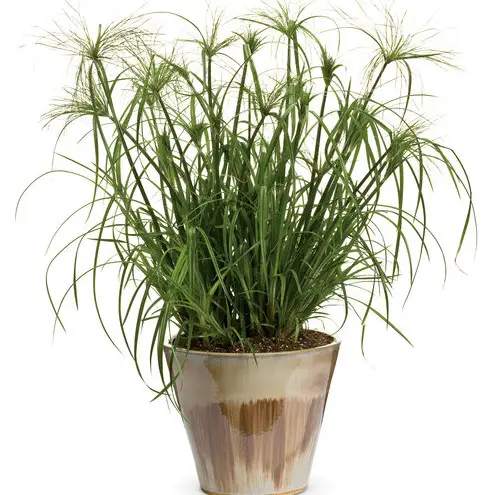
Papyrus (Cyperus papyrus), historically used for boats and paper, thrives as an intriguing houseplant in sunny areas. Sustained moisture is vital for its well-being, as it naturally grows along pond margins. Keep the container in a water-filled dish, changing it weekly to avoid stagnation. Optimal growth entails full sun exposure and consistently wet roots.
Snake Plant (Sansevieria trifasciata)

The resilient Snake Plant (Sansevieria trifasciata) is a go-to for beginners and busy individuals, thriving in various light conditions. While it flourishes in bright light, it adapts to shade. Occasional fragrant white blooms may appear. Ensure the soil dries between waterings. Optimal conditions involve full sun to low-light settings.
African Milk Tree (Euphorbia trigona)
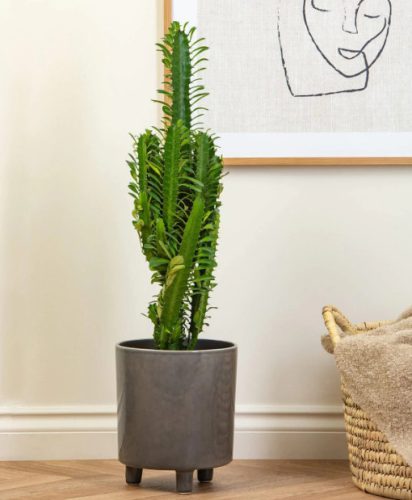
African Milk Tree (Euphorbia trigona) with its distinctive appearance often evokes strong reactions. While not a cactus, it sports formidable spines, posing repotting challenges. A tropical plant, it thrives in bright, indirect light, requiring regular watering. Avoid prolonged drought, ensuring the top inch dries before watering thoroughly. Bring it indoors before temperatures dip below 50 degrees Fahrenheit, if placed outside for summer.
Sago Palm (Cycas revoluta)
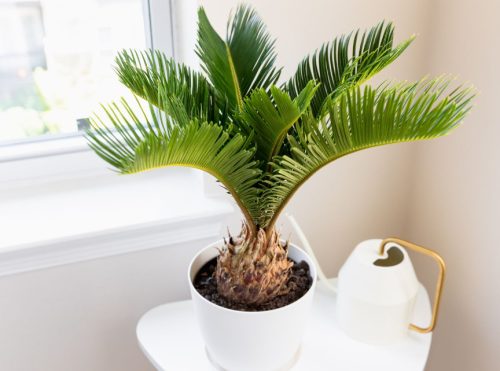
Sago Palm (Cycas revoluta), a slow-growing cycad, complements contemporary décor. It remains tidy in bright bedrooms or living rooms, shedding few leaves and lacking flowers. However, it is toxic and unsuitable for households with pets or young children. Optimal growth requires filtered sunlight and consistent moisture, with the soil nearly drying between waterings.
Jade Plant (Crassula argentea)
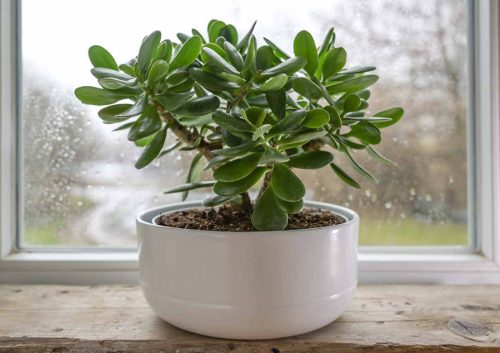
Jade Plant (Crassula argentea) thrives in sunny spaces, boasting robust stems and fleshy leaves. Ensure at least four hours of daily sunlight, preferably from a south-facing window. While drought-tolerant, it requires regular watering when the soil surface dries to prevent leaf loss. Use a sturdy pot to prevent toppling, as these plants can live for decades, steadily growing and blooming. Optimal conditions involve full sun exposure and well-drained soil.
Aloe Vera (Aloe barbadensis)
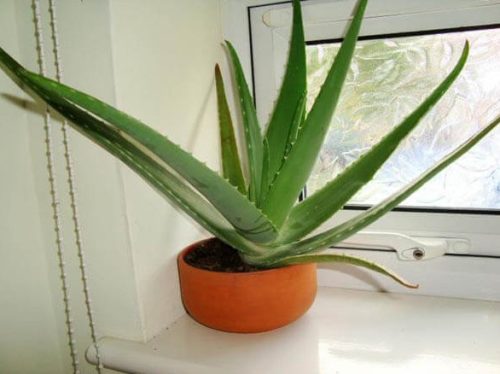
Aloe Vera (Aloe barbadensis), a low-maintenance first aid essential, offers instant relief for cuts and burns. Propagate easily by repotting offsets. Optimal growth requires a sturdy, terra cotta pot for support and airflow. It thrives in full or filtered sunlight, preferring dry conditions with good drainage and minimal watering, tolerating periods of drought.
Bird of Paradise (Strelitzia reginae)
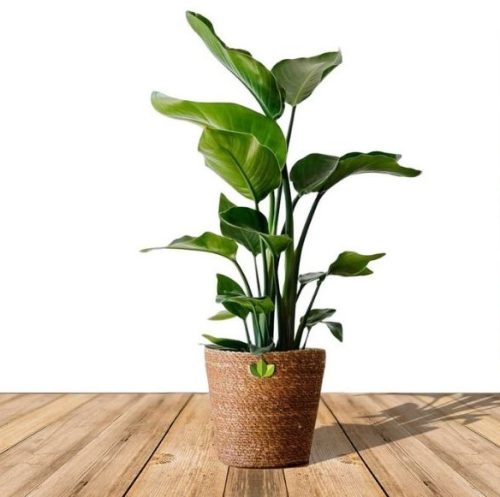
The tropical Bird of Paradise (Strelitzia reginae), resembling the banana plant, flaunts distinctive orange, white, and blue flowers. Although it can reach six feet in height, it lacks a central trunk, with large leaves emerging from the base. Mature plants (3+ years) yield unique late winter and spring blooms. Direct sun and high humidity are crucial, with outdoor summer relocation recommended. Stimulate flowering by allowing mature plants to become root-bound. Optimal care involves protecting from intense summer sun, frequent watering in spring and summer, and drier conditions during winter.
Norfolk Island Pine
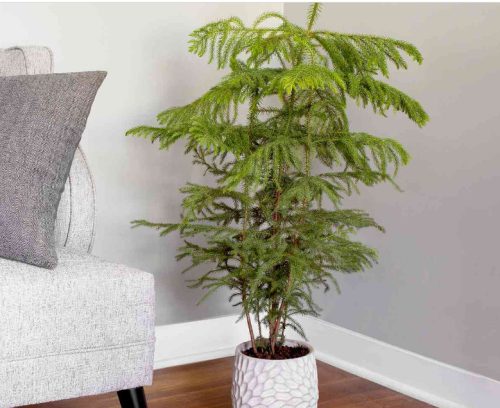
The Norfolk Island Pine, not a true pine but part of the Araucaria genus, resembles the monkey puzzle tree. Indoor varieties stay 3-8 feet tall, with symmetrical branches and a vertical trunk covered in soft, needle-like leaves. Often used as a living Christmas tree, it tolerates dry indoor air, needing full sun or indirect light and consistently moist but not waterlogged soil.
Meyer Lemon
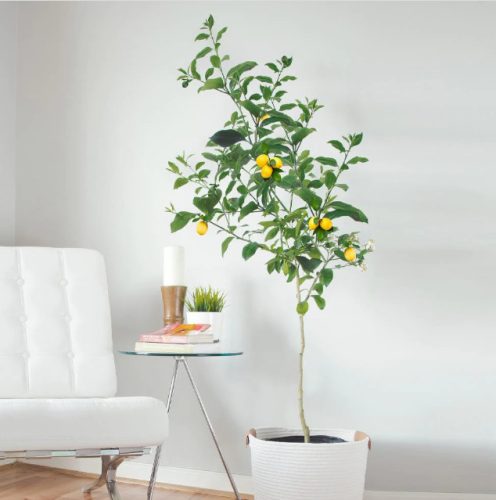
Meyer Lemon, a favored indoor dwarf citrus, results from crossing lemon and tangerine trees. Potted indoor growth restricts its size. Ensure eight hours of direct sunlight daily, preferably near a sunny winter or patio door. Maintain temperatures between 50 and 80 degrees Fahrenheit and humidity around 50 percent. Water thoroughly when the top inch of soil dries. Fruit typically ripens in spring after four to five years.
Yucca Plant (Yucca spp.)
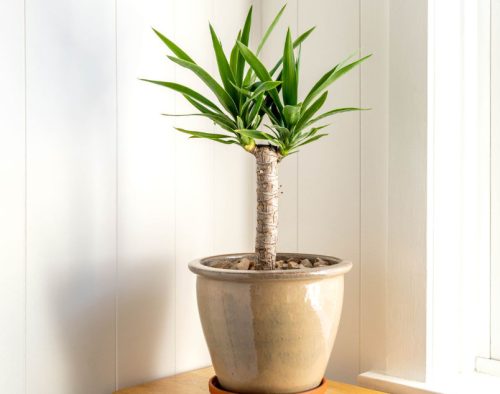
The Yucca genus comprises 40 perennial plants, ranging from 1 to 30 feet tall. Popular indoor choices include Yucca gigantea and Yucca aloifolia, with Y. gigantea favored for its spineless swordlike leaves. While it can eventually reach 30 feet, its slow growth allows for long-term houseplant use. Yucca plants tolerate temperature shifts but require minimal watering, only when the soil dries, typically once a week.
Zebra Haworthia (Haworthiopsis fasciata)
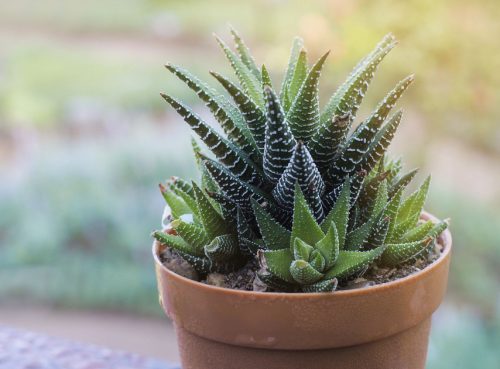
Zebra Haworthia (Haworthiopsis fasciata), a beloved succulent, features thick green leaves with horizontal white stripes. It thrives in bright indirect light but tolerates some morning sun. Leaf discoloration signals excessive sunlight. Optimal care involves full sun or intense light and occasional watering when the top inch of potting mix dries.
Tree Aeonium (Aeonium arboreum)
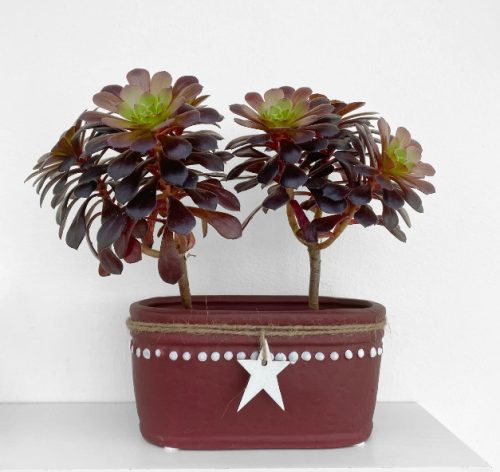
The Aeonium genus offers various popular houseplant options. Aeonium arboreum, or Tree Aeonium, features dense rosette clusters atop fleshy stalks. Slow indoor growth yields specimens up to three feet tall. They require slightly more water than other succulents, but overwatering can cause root rot. Pair with low-growing Echeveria in mixed succulent containers for added height. Optimal care involves full sun exposure and occasional watering when the top inch of soil dries.
Hens and Chicks (Sempervivum tectorum)
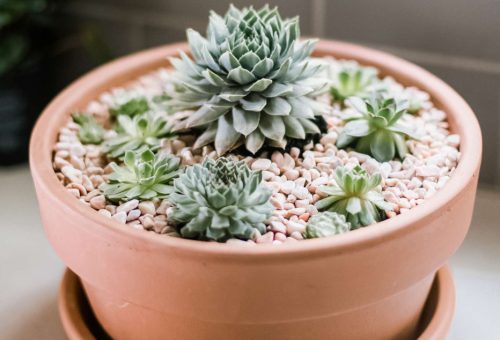
Hens and Chicks (Sempervivum tectorum) resemble Echevaria, forming sturdy rosettes. They endure temperatures as low as minus 35 degrees Fahrenheit outdoors and flourish at room temperature indoors (65 to 75 degrees Fahrenheit). Perfect for mass planting in shallow containers or mixed succulent arrangements, they propagate easily by detaching offsets from the mother plant. Optimal care involves full sun exposure and infrequent watering when the soil completely dries.
Echeveria (Echeveria spp.)
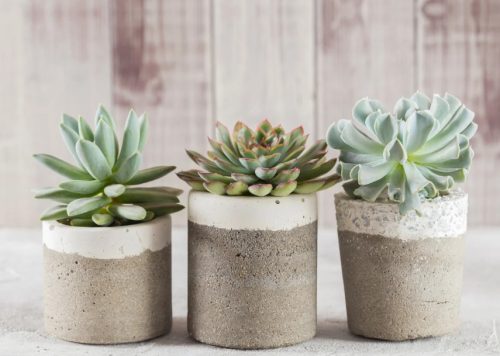
Echeveria, a diverse succulent genus, boasts numerous species and cultivars favored as houseplants. Their distinct feature is the fleshy, rosette-shaped leaves. Perfect for captivating mixed container gardens, fairy gardens, and terrariums, they thrive in abundant sunlight. During summer, outdoor exposure on sunny patios or decks is beneficial. Optimal care involves weekly watering in spring and summer, reduced to monthly in fall and winter. While colorful flowers are possible, they’re uncommon indoors.
Fiddle-Leaf Fig (Ficus lyrata)
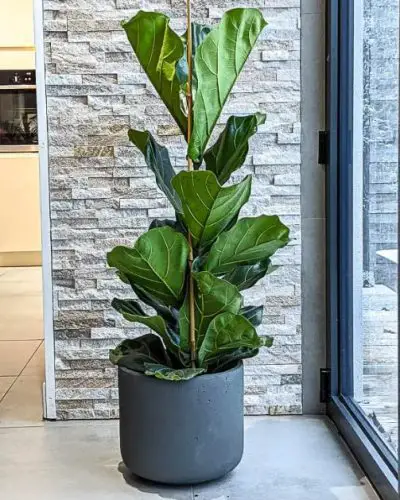
The Fiddle-Leaf Fig (Ficus lyrata) is recognized for its distinctive, lyre-shaped leaves. Indoors, it reaches six to ten feet, demanding ample space and bright surroundings. While favoring bright, indirect light, it tolerates some morning sun but should be shielded from direct afternoon sunlight. Regular watering during the growing season sustains its appearance. Wipe the leaves clean of dust every week or two for optimal aesthetics.
Dragon Tree (Dracaena marginata)
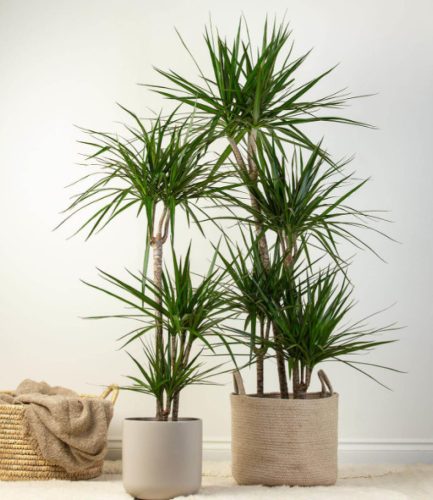
The Dragon Tree (Dracaena marginata), a slow-growing evergreen, thrives in bright, indirect light, but tolerates some direct sunlight with partial shade. Prolonged exposure to intense sunlight may cause leaf burn. Maintain uniform moisture, reducing watering during late fall and winter. Position it a few feet away from a south-facing window or door to ensure ideal lighting conditions, as inadequate light results in leaf discoloration.
Coral Cactus (Euphorbia lactea ‘Cristata’)
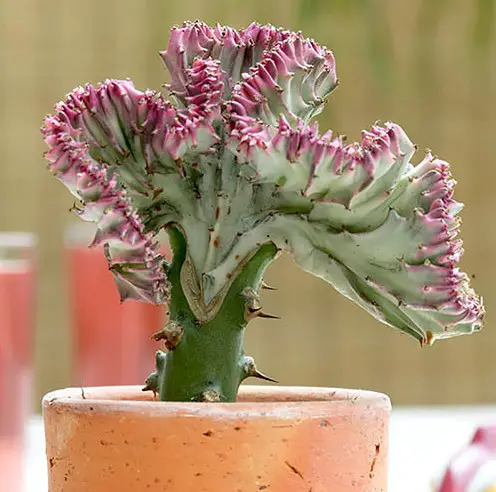
Coral Cactus (Euphorbia lactea ‘Cristata’), a unique cactus species, features shrub-like growth with thick stems and fleshy, spiny-tipped leaves. Indoor height averages around two feet. While scorched leaves rarely occur indoors, excessive direct sunlight may cause it. Exercise caution if pets tend to chew plants, as it’s mildly toxic. Optimal care involves bright light with partial sun and watering when the top two inches of soil dries during the growing season, reducing watering in winter until the plant starts to shrivel.
Burro’s Tail (Sedum morganianum)
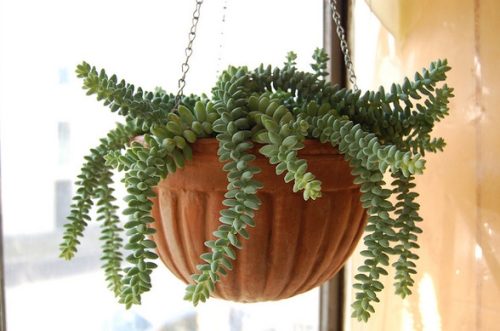
Burro’s Tail (Sedum morganianum), also called donkey’s tail, exhibits blue-green teardrop-shaped leaves clustering on cascading stems. Suitable for tabletops or hanging baskets, it slowly extends up to four feet. Unlike typical succulents, it thrives in moderate temperatures, enduring as low as 40 degrees Fahrenheit. Optimal care involves bright light with partial sunlight, monthly watering, and allowing the soil to dry between watering. Rare red or pink flowers may appear in spring when grown indoors.
Moon Cactus (Gymnocalycium mihanovichii)
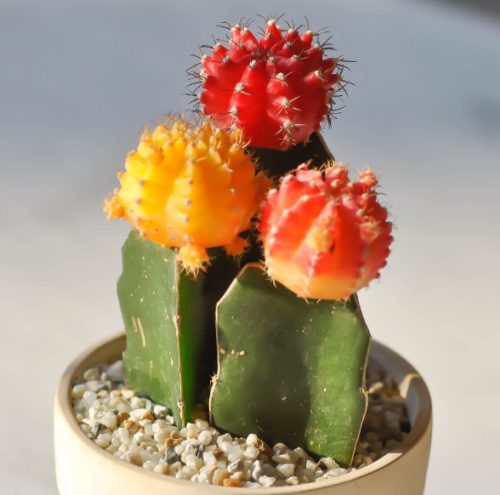
Moon Cactus (Gymnocalycium mihanovichii) is a grafted plant, featuring colorful scion atop a different host species. Various hues like yellow, red, orange, purple, or white are achievable. Standard cactus care includes warm temperatures, occasional watering, and ample sunlight. However, excessive direct sunlight can fade the scion’s vibrant colors. Optimal care entails a few hours of direct sunlight daily, deep watering after complete drying, and careful monitoring to prevent color fading.
Golden Barrel Cactus (Echinocactus grusonii)
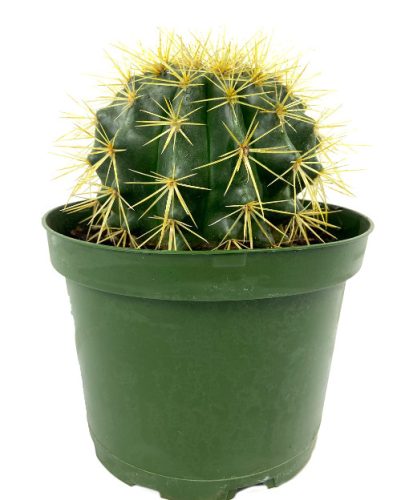
The Golden Barrel Cactus (Echinocactus grusonii) flourishes indoors, demanding full sun exposure. Slow-growing, it matures into a two-foot-tall, three-foot-wide spiny plant, ideal as a captivating tabletop display. Exercise caution with its sharp spines in households with small children or pets. Ensure warmth and sealed windows against winter drafts, watering monthly with soil allowed to dry between waterings, avoiding overwatering.
Ti Plant (Cordyline minalis)
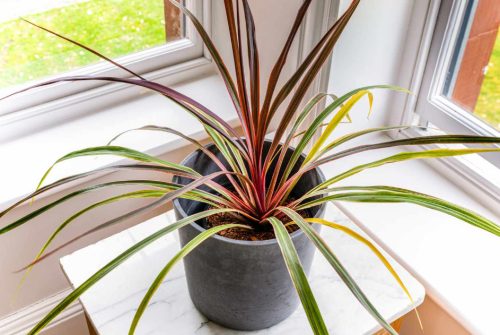
Ti Plant (Cordyline minalis), a tropical evergreen, thrives indoors, featuring palm-like, colorful foliage in pink, green, purple, red, or variegated forms. Optimal growth involves bright, indirect light, as excessive direct sunlight may scorch leaves. Maintain consistent moisture without overwatering, reducing water during winter. Ideal conditions include humid surroundings, making it an excellent indoor floor plant.
China Doll Plant (Radermachera sinica)

China Doll Plant (Radermachera sinica) from China, adapts well as an indoor potted plant. Flourishing in bright indirect light, it tolerates limited direct sunlight. It grows into a four to six-foot-tall floor plant or serves as a tabletop plant when young. Regular pruning every few months helps maintain its shape. Optimal care involves consistent moisture without overwatering, avoiding full sun exposure.
Gardenia (Gardenia jasminoides)
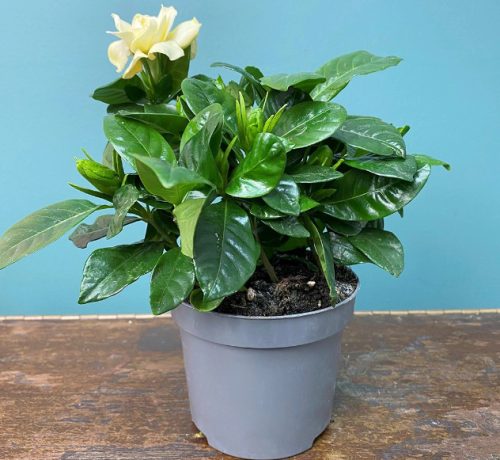
Gardenia (Gardenia jasminoides), an evergreen shrub, serves as an indoor houseplant, especially the dwarf ‘Buttons’ variety, requiring regular pruning to maintain its size. Thriving in sunny locations, it flourishes with fragrant, creamy-white blooms when spent flowers are promptly trimmed. Optimal care involves bright light, deep weekly watering, and prevention of soil dryness. Its appealing foliage makes it an attractive year-round plant.
People Who Read This Also Read:



